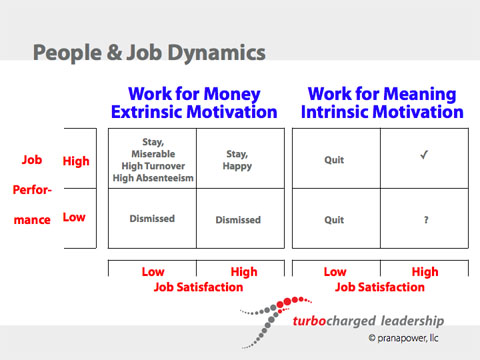On March 14, 2012 Greg Smith, a Vice President in the London office of Goldman Sachs, resigned from the firm. The same morning an op-ed piece from him with a public explanation for his resignation was posted on NYTimes.com. Mr. Smith stated that he could no longer work at Goldman given the shift, in his opinion, from a strong customer orientation to concern solely for Goldman’s profit.
Reflecting on how you might respond to a similar situation is a good leadership exercise. I believe there are two facets, or angles, from which to view this situation—internal and external to your organization.
As a leader, I feel it would be crucial to reach out to customers as quickly as possible with a message describing your values related to customer satisfaction and providing specific examples where customer benefits were put before your own corporate profitability. As I have written previously, trust is an essential element of leadership. This message can be delivered without a reference to the op-ed piece, thus keeping Mr. Smith’s negative view below the radar if it had not surfaced at any given customer.
The second facet is more difficult. An important question is the accuracy of Mr. Smith’s views. If his views are a faithful representation of your culture then it is time for some organizational reflection and soul-searching. It may be important to ask yourself what cultural values you wish to promulgate and then make a concerted effort to assess leader behavior.
Your behavior speaks louder than your words. Maintaining awareness of your own behavior is frequently difficult although training in mindfulness can pay great dividends. Using a third party to gather qualitative and quantitative views of your behavior is a good complementary method of assessment.
While it may be easy to dismiss Mr. Smith as simply a disgruntled employee, an authentic leader will have the desire to dig deep within himself and into the organization for any lessons that may be gleaned from this unfortunate situation.
Concepts:
- Embrace and quickly respond to any customer concerns related to publicly aired negative views of your organization
- Take any negative opinions of your leadership to heart
- Use self-reflection and mindfulness to become more aware of your own behaviors
- Use a third party to gather qualitative and quantitative views of your behavior
Keywords: leadership, trust, culture, mindfulness
References:
- Hogan, R. J. (2007). Personality and the fate of organizations. New York: Lawrence Erlbaum.
- Hogan, R. J. (2008, April). Leadership is a Hygiene Factor. In R. B. Kaiser (Chair), Unconventional thinking about leadership. Symposium conducted at the meeting of Society for Industrial and Organizational Psychology Conference 2008, San Francisco, CA.
- Schein, E. H. (1990). Organizational culture. American Psychologist, 45(2), 109–119.



